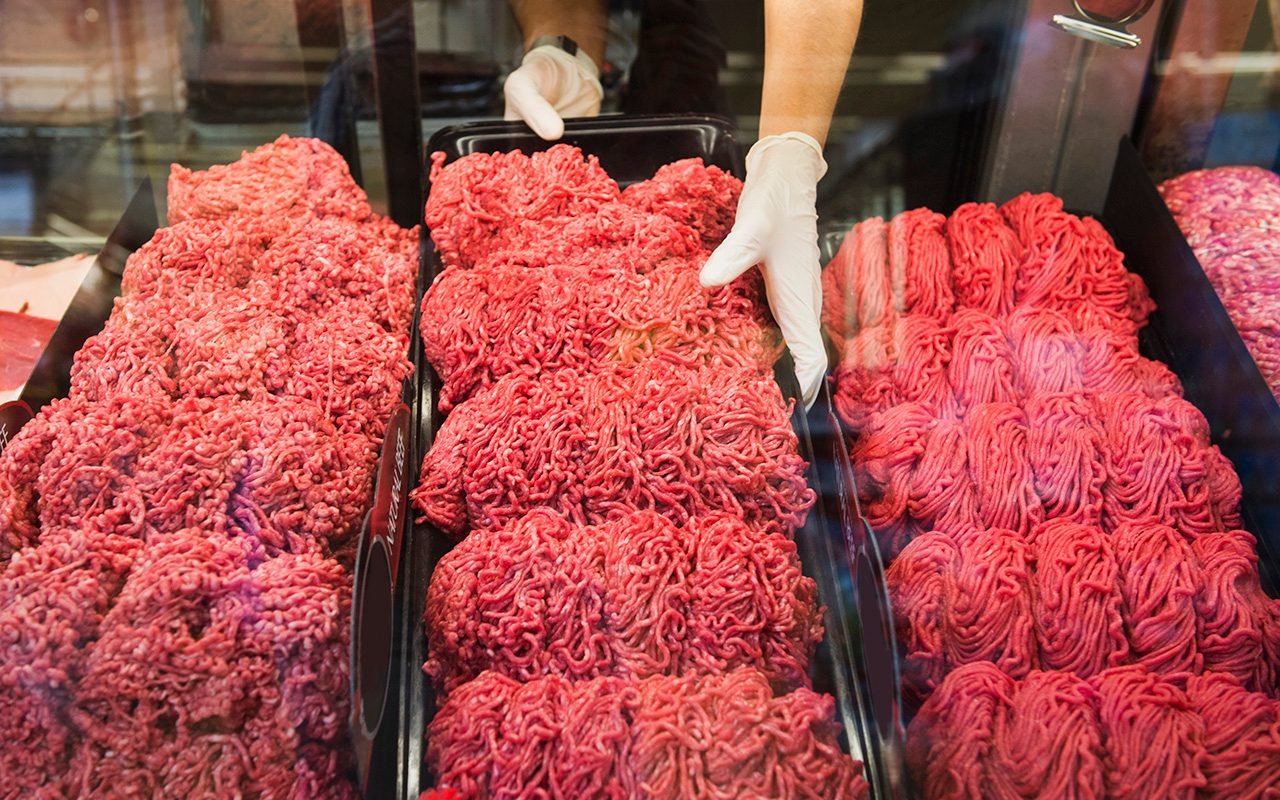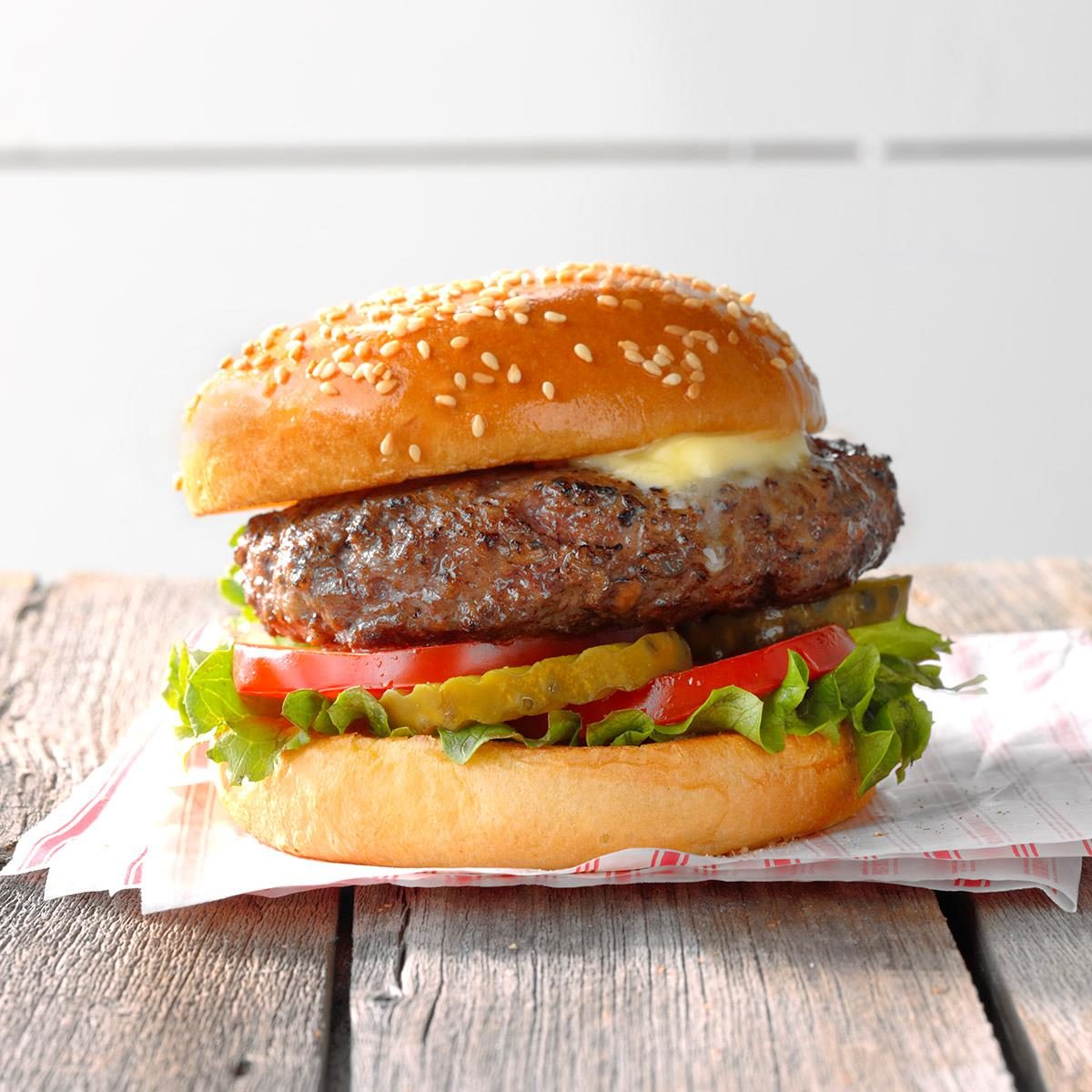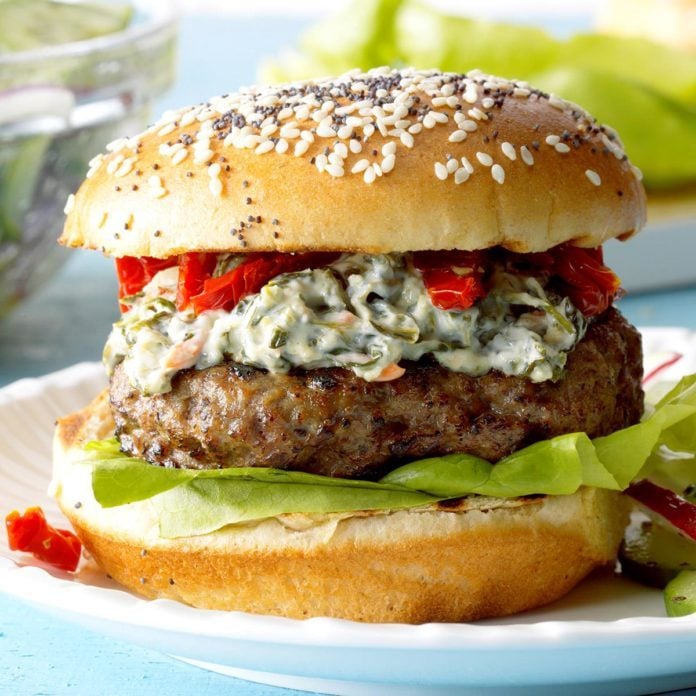Ever since we started cooking outdoors, man has been on the hunt for the perfect burger. In our search, we quickly realized many tricks and tips on forming and cooking beef patties. We also solved most of the common grilling mistakes and that helped even more. But let’s be honest, even following all that advice can’t help you if you start off on the wrong foot. If you’re truly serious about your quest for the elusive Perfect Burger, then we need to have a frank discussion about beef.
I’ll be the first to admit there is a lot of conflicting recommendations when it comes to selecting the best beef. Some will tell you to buy the best steaks you can find and grind them up. Others swear by a 70% lean to 30% fat ration. It’s enough to make you quit long before you even get started. Some advice I agree with wholeheartedly and some I wish I could scrub from the internet. I’m not sure if what I believe is truly the best, but this is what I’ve found works the best for me.
Where You Get Your Beef Matters

As it is with most things in life, if you’re looking for the best of anything, you have to know where to go to get it. Grocery stores are great for ground beef you’re going to put in one of Grandma’s best casseroles because there are a lot of other ingredients that are going to help make it shine. While these are delicious and I love them, the ground beef isn’t necessarily the star of the show.
When it comes to burgers, the beef is going to take center stage, so it stands to reason not every package of ground beef is going to make the cut. For this reason alone, I firmly believe you should seek out a good butcher or meat market. Yes, you’ll probably pay a little more but all things considered, what you’ll end up getting will be far superior to what you could get anywhere else.
However, before you walk into the shop, make sure you know a few of the things you should never do at a butcher shop.
Let’s Talk Fat Content
Go to any grocery store and you’ll see many forms of ground beef; anything from 70/30 all the way up to 93/7. This is the ratio of lean meat to fat. A 70/30 blend is going to be 70% lean meat and 30% fat. That means 93/7 has almost no fat. Do not think for one minute you’re going to get a juicy, mouthwatering burger with a 93/7 blend. It’s too lean and with burgers, you need some fat. You just have to have it.
Right about now, you’re probably thinking, “So what is the best blend?” I wish I had a simple answer for you but where is the fun in that? The piece of info I like to keep in mind before selecting a specific blend is two-fold:
- What temperature are you going to cook the burgers at?
- How are you cooking them?
If I’m going for a medium-rare burger I don’t need to have as much fat to keep them juicy. For this, I’ll probably go with an 80/20 blend. If I’m going for medium-well, get a 70/30 blend. Well-done burgers will dry out quickly so get a mix with a high percentage of fat, something along the lines of 60/40. That way there will still be some fat in the burger after it’s cooked so hopefully, it will still be juicy.
Grilling vs. Pan-Frying

How you cook your burgers also will help clue you into what type of beef to get. If I’m going to grill the burgers, I like to have a little more fat in the mix. A lot of the fat will drip out while it cooks and you’ll end up with less fat in the burger.
When pan-frying burgers, you have more control over the heat, and you typically will cook it at temperatures less than on a grill. I go for a slightly lower fat content because of that. Plus, I won’t end up with lots of grease leftover in the skillet.
Choosing a Cut of Beef
You want to start with full-flavored beef. I almost always go for chuck, round or even brisket. Round is leaner so you’ll need to increase the fat content by adding another cut. That’s when I ask for the short-ribs. They have an intense beef flavor and the fat won’t melt out as fast as other types of beef fat. Adding short ribs to your mix, no matter what you start out with, is one of the things I’ve found helps bump up the beef flavor.
Now is when having a good relationship with a butcher is really going to help you. By talking with him or her, you can work together to determine what mix will give you the best flavor. Don’t be embarrassed to ask questions. I’ve always found if you go in with genuine enthusiasm and interest, they’re almost always happy to help. They want you to come back so it’s in their best interest to get you exactly what you’re looking for.
You were probably hoping you could read this and walk away knowing what specific blend you should ask for. As you can see, that would be hard for me to do because everyone’s preferences are different. While I haven’t given you an exact blend, I have given you the key information to keep in mind when building your own mix.
The Bottom Line
One final thought, if in doubt, always go for a mix with a higher fat ratio. You can’t fix a dried out burger once that damage has been done.

Spinach Tomato Burgers
Every Friday night is burger night at our house. The tomatoes add fresh flavor and the cool spinach dip brings it all together. We often skip the buns and serve these over a bed of grilled cabbage. —Courtney Stultz, Weir, Kansas
Barbecued Burgers
I can't take all the credit for these winning burgers. My husband's uncle passed down the special barbecue sauce recipe. We love it on everything...it was only natural to try it on, and in, burgers. Add cheese and bacon to take them over the top. —Rhoda Troyer, Glenford, Ohio
Herb & Cheese-Stuffed Burgers
Tired of the same old ground beef recipes? This quick-fix burger alternative, with its creamy cheese filling, will wake up your taste buds. —Sherri Cox, Lucasville, Ohio
All-American Bacon Cheeseburgers
Where can you get a juicy bacon burger that is so superior to drive-thru fare? Right in you backyard with this delicious cheeseburger recipe. —Jackie Burns, Silverdale, Washington
Oven-Baked Burgers
A crispy coating mix is the secret ingredient that dresses up these baked burgers. You bake them in the oven instead of grilling or frying. I like to use a sweet and spicy steak sauce for the best flavor. This is how to cook burgers in the oven. —Mike Goldman, Arden Hills, Minnesota
Buffalo Turkey Burgers
Celery and blue cheese dressing help tame the hot sauce on this turkey burger recipe. For an even lighter version, pass on the buns and serve with lettuce leaves, sliced onion and chopped tomato. —Mary Pax-Shipley, Bend, Oregon
Basil Burgers with Sun-Dried Tomato Mayonnaise
I often end up with a bumper crop of basil—here's a favorite way to use some of it. These burgers feature great Italian flavor. The gooey, cheesy centers and scrumptious topping are irresistible. —Virginia Kochis, Springfield, Virginia
Burger Americana
Go on a burger road trip in your own backyard. Grill the patties and load them sky-high. Peanut butter and bacon make them Southern style; coleslaw and tomatoes, a Northern version. —Susan Mahaney, New Hartford, New York
Grilled Bean Burgers
These juicy veggie patties have major flavor with cumin, garlic and a little chili powder. They hold their own against any veggie burger you‘d buy at the supermarket. —Marguerite Shaeffer, Sewell, New Jersey
Mushroom-Stuffed Cheeseburgers
No need to call my family twice when these burgers are on the menu. Get ahead of the game and stuff them ahead of time, then grill later. — Joyce Guth, Mohnton, PennsylvaniaThe post Which Ground Beef is Best for Burgers? appeared first on Taste of Home.
James Schend